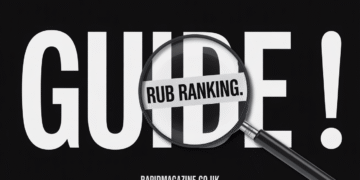Florida is a powersports paradise, with sugary beaches, pine-lined fire roads, and scenic rural byways. But if you want to cruise from your neighborhood to the trailhead without loading a trailer, you need to transform your off-road UTV into a Florida Street Legal Side by Side that satisfies on-road requirements.
This guide walks you through the essentials: equipment, documents, inspections, insurance, and practical strategies to streamline the process. If you’re wondering how to make a UTV street legal in Florida, you’ll find expert tips, common pitfalls, and a realistic step-by-step plan to get your machine shining under the sun and legal on the asphalt.
Need help turning your UTV into a Florida street legal side-by-side fast? 1 Dollar Montana handles the paperwork, plate path, and compliance checklists for all vehicle types. Skip the headaches and ride sooner. Start your street-legal journey with 1 Dollar Montana today.
What “Street Legal” Really Means (and Why It’s Worth It)
A Florida Street Legal Side by Side isn’t just about bolting on a turn-signal kit and calling it a day. “Street legal” means your vehicle meets road-use equipment standards, carries the right credentials (registration, plate, insurance), and can operate where local and state rules allow. The payoff is flexibility: quick grocery runs, reaching dispersed trailheads, navigating small towns, and minimizing trailer time. It can also boost resale value and broaden your weekend options.
Pro tip: Keep your build sheet and receipts organized. If a deputy or inspector asks what you installed and when, you’ll have a clean paper trail.
Road-Use Reality Check in Florida
Florida’s rules for UTVs and side-by-sides are nuanced. Counties and municipalities may differ on where low-speed or modified off-highway vehicles can legally travel. That’s why your plan should include two tracks:
- Mechanical readiness: Outfit your UTV with the safety and visibility gear typically required for on-road use.
- Paperwork readiness: Line up registration, insurance, and any locality-specific permissions that apply to your area.
Even when your UTV is prepped as a Florida Street Legal Side by Side, always check posted signs, neighborhood rules, and county ordinances. The goal is full compliance plus practical awareness of where you can and cannot ride.
The Core Equipment Checklist
While exact requirements can vary by jurisdiction, most successful street-legal builds include the following essentials. Think of this as your build baseline:
- DOT-compliant tires suitable for pavement (verify speed and load ratings).
- Functional headlights (low/high beam), tail/brake lights, and front/rear turn signals.
- Reflectors or reflective tape in required positions.
- The horn is audible at a reasonable distance.
- Rearview mirror(s)—many riders opt for one center and two side mirrors for visibility.
- Windshield (if required) or, where allowed, goggles/eye protection for each occupant.
- License plate mount with an illuminated plate light.
- Speedometer/odometer and backlit indicator lights for turn signals and high beam.
- Parking brake and adequate brakes on all wheels.
- Seat belts for all occupants; the roll cage must be secure and uncompromised.
- Muffler meeting noise limits and a spark arrestor if you ride public lands.
Setup tip: Choose a single integrated street-kit bundle (signals, horn, harness, indicators) to simplify wiring and troubleshooting. It’s neater, faster, and often cheaper than piecemeal sourcing.
Insurance, Registration, and Plate Path
Turning your UTV into a Florida street-legal side-by-side also means carrying the right documents:
- Insurance: Obtain on-road liability coverage at a minimum. Ask your insurer if they classify your vehicle as an LSV, modified off-road vehicle, or specialty vehicle; classifications impact premiums and coverage.
- Registration & Title: Ensure your VIN is legible and that your title is correct. You’ll need the right forms, ID, and proof of ownership to complete the process.
- Plate & Decals: Mount your plate with illumination and affix any required stickers. Keep a mini toolkit in the glove box so you can tighten or adjust the bracket on the fly.
Why riders get stuck: paperwork mismatches (wrong VIN digit, outdated address), missing receipts for modifications, or unclear vehicle classification. A professional filing partner can prevent these snags.
Step-by-Step: How to Go From Dirt to Drive
- Baseline inspection: Check brakes, steering, bearings, lights, and wiring. Fix mechanical issues now to avoid failing a final inspection later.
- Install the street kit: Turn signals, horn, mirrors, and plate light. Test each function.
- Upgrade tires: DOT-rated with appropriate pressure for pavement. Confirm torque on lugs after the first 25–50 miles.
- Add visibility: Reflectors, bright brake bulbs, and a third brake light if possible.
- Paperwork prep: Title, bill of sale/ownership docs, equipment receipts, and insurance quote.
- Insurance: Secure on-road coverage and request proof of insurance cards (keep one on the machine).
- Registration & plate: Apply with all documentation. Install the plate bracket and light.
- Final safety check: Verify everything works, belts latch, mirrors are adjusted, and tools are onboard.
- First shakedown ride: Choose a short legal route with low traffic—listen for rattles, re-torque hardware, and refine mirror angles.
Local Ordinances: The “Micro-Map” You Must Read
Even with a fully equipped Florida Street Legal Side by Side, you’re still navigating county and city rules. Some areas allow low-speed vehicles on roads posted up to certain speed limits; others restrict shoulder riding or downtown access. Before a new ride area:
- Search county DOT or sheriff websites for LSV/UTV guidance.
- Call the non-emergency line to confirm ambiguous stretches of roadway.
- Note school-zone, beach-access, and park rules—these change with seasons and events.
Carry a screenshot of any official guidance on your phone. If questions arise roadside, friendly, informed cooperation goes a long way.
Smart Setup for Daily Riding
A legal build is the starting line. Make commuting or errand runs seamless with a few comfort upgrades:
- Weather protection: Half windshield with vent, soft doors for rain, and a quick-release roof.
- Secure storage: Lockable center console, bed box, or behind-seat vault.
- Phone mount + USB: For navigation and insurance ID cards; keep a printed copy as backup.
- LED running lights: Be seen at dawn/dusk.
- Tire repair kit & compressor: Pavement nails happen—be self-sufficient.
Safety Habits That Separate Pros from the Pack
- Dress like a motorcyclist: Gloves, eye protection, and a DOT helmet where prudent—even if not mandated in your locality.
- Defensive gaps: You’re smaller than cars; leave larger following distances and avoid blind spots.
- Signal early: Your turn signals are smaller than a sedan’s; supplement with hand signals when appropriate.
- Rain rule: Wet pavement shortens your stopping distance—slow down and brake progressively.
- Night discipline: Keep speeds conservative, aim headlights correctly, and clean light lenses often.
Troubleshooting: Common Reasons Builds Fail
- Electrical gremlins: Poor grounds or Scotch-lock connectors. Use heat-shrink, solder where appropriate, and protect harnesses in the loom.
- Plate illumination out: Tiny bulbs fail regularly; carry a spare.
- Non-DOT tires: Inspect sidewalls for DOT marking before inspection.
- Mirror vibration: Upgrade to stiffer mounts or add a center mirror to stabilize your view.
- Paperwork gaps: Missing insurance card, mismatched VIN, or an incomplete application package.
FAQs
Can I use my side-by-side on every city street once it’s “legal”?
Not necessarily. A Florida Street Legal Side by Side must still honor local road permissions and speed-limit constraints. Always verify the specific streets you intend to ride.
Is a windshield mandatory?
Rules vary. Where a windshield isn’t required, riders may need approved eye protection. A half windshield improves comfort without creating glare.
What about exhaust and noise?
Florida enforces general noise standards. Choose a compliant muffler to avoid citations and to keep neighbors happy.
Will gearing or clutch changes help on pavement?
Yes—some riders add a pavement-friendly clutch kit for smoother takeoffs and lower cruising RPMs. Confirm compatibility with your tire size and terrain mix.
When to Bring in Pros (and Why It Pays)
If you’re juggling work, family, and weekend riding, outsourcing the filings and compliance path can save time, reduce stress, and prevent do-overs. A specialist can:
- Confirm the correct classification and forms for your machine.
- Review your equipment list for compliance gaps.
- Coordinate insurance documentation and proof of coverage.
- Streamline registration and plate issuance so you’re truly ride-ready.
Bottom-line
A well-planned build plus clean paperwork turns your UTV into a Florida Street Legal Side by Side that expands your riding universe, errands, coffee runs, and scenic connectors between trail systems.
Keep your maintenance tight, your documents current, and your route knowledge fresh. The road is calling, and the Sunshine State is better from the driver’s seat of a dialed-in side-by-side. 1 Dollar Montana helps riders of all kinds register, title, and insure their rigs, UTVs, ATVs, and more. From forms to plate mounting, they smooth the process end-to-end.












